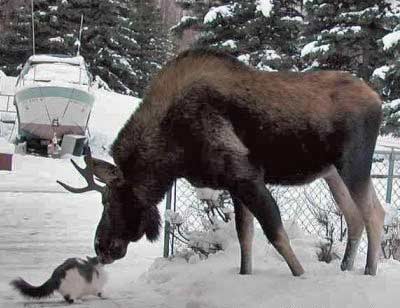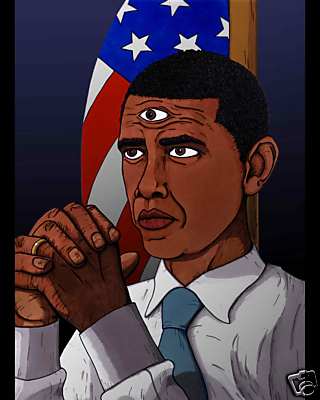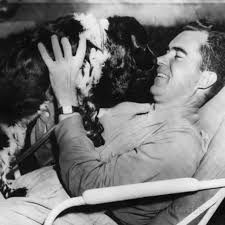I had a half baked hare brained theory, one that I have managed to talk (or think) myself into. It started as a flippant thought as I read semi- chronologically a good number of old Archie Comic Llbooks. Then, when stuck having to extrapolate its basis I got caught me in a pile of dredging through explanations of company history for the basis of its suppositions and on to further clarifications and further clarifications of the clarifications, maddening in that I never assessed the matter as of any import, and until I stumbled upon one last piece of evidence, I was only half buying in the first place.
Okay, try this one:
Jughead was coming across as kinda gay round about the early 70s, and the editors were concerned enough to intervene and… straighten him out. Hence an aborted makeover in the 1970s which evolved into a sparodic tiptoed use of a contrived plot device for half a decade, that was later followed by another makeover attempt in the 1980s. The second half one gets covered in any official company history, where the first appears — to my mind much more obnoxious –basically unspoken of and crushed under.
Googling about, at least the final part of my thesis has been stated by a black queer fan with more assertiveness and certaintude as matter – of -fact ‘fact’ than I hald held — — which may mean that the most contentious premise I have is in placing any stereotypical “Queenie” Ness as popping in only in about 1970. But I kind of shrug away efforts and a desire to drag a 1950s asexuality informed by 9 year old readers’ attitudes on gender divisions (the male reader or the female reader’s younger brother thinking “ew – cooties”) — or perhaps something like Huck Finn’s attitudes toward Tom Sawyer’s infatuation with Becky Thatcher — into modern day identity political. So I gather this Twitterer may have more emotional investment than I in getting at a queer Jughead, in a world with a paucity of identifiable queer characters and where you find them where you can. Keep in mind that Jughead’s 1959 attitude toward homosexuality is seen here, with a puzzling to my eye insult at a swishy French hairdresser (seriously, I want to know precisely what Jughead is gettimg at), and then here’s a 1970 or thereabouts view on transvestism. I found that tweet linked from a bunch of commentary complaining on a ” queer erasure” due to Jughead’s romantic relationship with Betty in the Riverdale tv show — a romance which does indeed have some follow through from the comic books — or enough that there is an entire page devoted to fishing out pages and panels on their friendship — but it would be absurd that if the show had not followed this course anyone could complain about a “Bughead erasure”, all on a tv show that has refashioned, lsay, Cheryl Blossom as a lesbian — a sharp deviation from her portrayal in the 1982 – 1985 comics where she was… Um… Comics Code approved sublimated slut?
I suppose the long arc of Jughead’s asexual arc is fodder for hipster cracks. Chasing Amy sees Kevin Smith getting his jollies at the expense of America’s most mocked comic book — and if I guess if he needs any panels for the line I can point them out. But I gather this doesn’t come from any actual reading of them. In 1999, when Jerry Falwell outed Tinky Winky as beimg adopted by the gays as a symbol or totem (I always wondered if this had been, in fact, true), some semi notable alt cartoonist (Lloyd Dangle perhaps?) ran in his weekly a gag which ends in a parody of supposedly gay cartoon characters — Peppermint Patty for instance, probably Bert and Ernie — and thrown in was Jughead. Overall, the phrase that gets at Jughead’s personality is “Archie’s Spock” — and I never look at Spock and think “gay”. Somewhat alien, perhaps. But the gag sits there, apt to turn into fighting words, as Evan Dorkin sees in causing riots at hockey crowds.
But then, why the does my own “gaydar” go off when staring at about the 1970s? Sure, cultural shifts in how traits read and where “We’re Everwhere” signs pop up post Stonewall — that long haired pear-shaped bearded man joke would make no sense in 1960 –, but mostly it is an accident of commercial changes. The cartoonist Seth placed the “good years” for Archie Comics as 1959 – 1965. It seems that a few things happen thereafter. One — the core group cartoonists turn south — Harry Lucey contracts Lou Gehrig’s Disease and loses a couple steps an route to retirement, Samm Schwartz tries his hand at a different company, and Dan Decarlo’s work suffers through over-extension and apparent commercial demands for easy marketing use. The new hirees largely suck — Al Hartley is using his job as a soapbox to sell kids his fundamentalist Christian faith and socially conservative politics, which at least gives something to comment about as opposed to the page filling one dimensional pablum of what Dick Malmgren and Gus Lemoire offered.
The biggest problem at the end of the 60s, and departure from Seth’s defined “Golden era”, is that they take on the feeling of the Saturday Morning cartoon. Notably, advertisements for correspondent’s schools — suggestive of a secondary market of illiterate adults that the comics creators are writing for — fade away. And we have an annual occurence of the tv networks buying space to promote their Saturday Morning line-ups. In this shifting, the characters get reassembled somewhat, violent reactions sidelined, colors brightened and cartoon effects broadened to fit the somewhat changed audience.
And, as an accidental byproduct of this, Jughead starts acting kind of queenish. Certainly not a deliberate choice and certainly not a subtext anyone is reaching for, but if you are running a website like “Archie Out of Context” in the 21st century, this is the period you go to to fulfill “Jughead, gay panel” quota.
The thing about the Archies of the first half of the 60s is the characters are all kinds of jack asses to one another. They exist in an amoral universe where good and bad deeds are neither necessarily rewarded or punished. In this environment, Jughead trends to the damned surly. Post Saturday morning, reconfiguring moving plot devices for an audience hopped up on Sugar Smacks, and Jughead’s meanness is stripped away. For pc reasons we also shift definitions of misogyny where, moving into the 1970s this gets displayed by, for instance, him physically recoiling in peering into a locker room full of half naked girls. And what does that signify now? Not necessarily that “ew cooties” Frank Doyle is thinking. And I do have a selection bias here — no issues of Jughead where he would be chief protaganist — so it could be that a strangely lispy Jughead was only walking into scene when situationally a foil for Betty and Veronica — but then, those were better sellers on the market anyway, and by through that more important for popular conception.
In 1978, we are tossed a “magic pin” which Jughead wears and is irrestible to the ladies. And I see here an origin point, and an index note offering that this plot device was originally less tentatively deployed than I had initially thought and seen in its usage in sparodic appearances in nonsensical stories through the late 70s and early 80s.
This issue introduces one of the most unusual continuing storylines in Archie comics history: an unseen, mysterious force finally makes Jughead attracted to girls, and gives him a new, supernatural pin on his hat. The storyline was strung through stories in “Jughead,” “Archie” and “Betty and Veronica” around this time. After reader reaction was not positive, the story was dropped without explanation. However, Jughead’s attraction to girls, as well as his magic pin, were briefly brought back in 1982 during another attempt to make Jughead more of a ladies’ man. The stories in this issue also try out a new design for Jughead, more conventionally handsome and with a square jawline. It was dropped along with the storyline.
A couple details here are striking. The name of the story, “Genesis… the Beginning” implies that they really want to start over with Jughead for some reason… somehow. But most notable is that “square jawline”, a blunt symbol for masculinity — and a change not seen in take two (or take one point five?) and take three (two?) in a Jughead Rehabilitation Project. When I first saw this rendition of Jughead, I assumed that the cartoonist, Dan Decarlo, Jr — was getting his feet wet and just wasn’t copying his father’s character designs right yet. But then a couple stories into this i!sdue of Archie and we have Archie’s parents remarking on his spiffy new appearance — a very obnoxious deviation from his “don’t give an eff” established personality. Perhaps in this Attempt number one at fending off the Gay Panic Archie Comics is over-compensaLlll ting, because this one comes across as dropping Jughead off at a Gay Reparation clinic and him coming back manly, and false.
Around this era, we get two stories that stem out of a “Son, we need to talk” narrative. If there was one story, I would assume that in cranking out material, the writer — Frank Doyle — just wanted to change the pace for his own sanity and throw something in more sentimental than the standard. But two leaves me to suspect an editorial injunction. And I can’t say I buy any ofthe commentary on “Jughead dances with his mom” — again, a paucity of actually gay characters will lend people to seeing subtext in characters whose statuses (outsider) share some experiences (Jughead’s dad wants to know.) Overall, this wouldn’t be that “the dad concerned that the son is gay” as much as that the son is shy — except that we return to the same premise and see that Jughead’s dad needs to have that talk again — within the same time period — and now I’m reading in the editor (Gorelick, I guess) shouting across the room a “And he’s not gay!”
… as we commence with effort number two (or, maybe, one point five), and the “magic hat pin” — an imterstitial use which is seemingly designed to ponder the mark time and wade in on the question before they decided to plunge forth on effort number three (or two?) That interstitial attempt — returning to an occasional “magic hat pin” story — is curious in that the object is more important than the character — so, the hat falls into the hands of his uncle and for comedic effect (I… guess?) middle aged women are suddenly attracted to him. Or, to help out Betty and Veronica when the sexually aggressive new character Cheryl Blossom attracts Archie, by putting that pin in his hat.
When we return to trying for a heterosexual hormonal Jughead in 1987, the publishers get more conscientious in selling a Jughead more consistent with his established character, just… now… more interested in girls. (The publishers hope he can be taken as a late-bloomer, and if not for staring at that 1978 rendition of the theme, I would partially or wholly accept this line). And I suppose I lay at a point of contention to those queer readers as not really being bothered by this one, an indifference aided strongly by the ultimately temporary nature of this story arc — where in giving an 80 year overlview I can just view it that Archie does this one for awhile (and since this is Archie, your lazy plotline is to throw a love triangle — predictably that is exactly the story they threw shortly after introducing Kevin Keller and encountering some criticism that onle gay token does not la progressive make), then they try that skater punk thing to decidedly mixed results (good lord they reach for hipness and stumble into incoherence), then –as I look over that cover gallery — one can probably just skip all that Al Hartley and Stan Goldberg and over compensatiom for the “into the 90s with Skater Jughead and a jive-slang spewing white editor” attempt to the company’s reinforced back to basics mission statement bludgeoning for “wholesome, family oriented, safe harbor in tumultous culture” eral defined by his new sister — before Craig Boldman and Rex W Lindsey offer somelthing more interesting and a worthwhile female foil Jughead can work against — a good use of a dopey old ptemise from 60s issues that probably won’t translate well in women’s or gender study analyses.
Curiously, the website I stumbled upon for a batch of commentary despising Jughead’s not queer portrayal in the Riverdale tv show as deviating from core characterization in the comics appears to hold the skater punk era of Jughead dear. This, we see from this cover where that group sees Jughead as too weird for them, as drastic deviation of personality traits as anything else.
Of course, when Archie did throw in an actual opengay charlacter, in your standard issue Three’s Company punchline, Veronica thought Jughead was gay. At the risk of accounting for the full implications of easyL out gags, it is curious to see this flowing easily for Veronica for one page after having known and interacted with Jughead for maybe ten years. But then again, maybe they just recently met as in her original appearance in 1942 she just moved in to Riverdale. But then again, she moved to town twice in that period. And has moved to town subsequently at earlier grade school ages through the next batch of decades. So, you know, Veronica has no problem picturing Jughead as having been gay for ten years when it fits this story need, and her mind is wiped out completely of the 1978 square jaw machismo or his 1988 duo of girlfriends…



